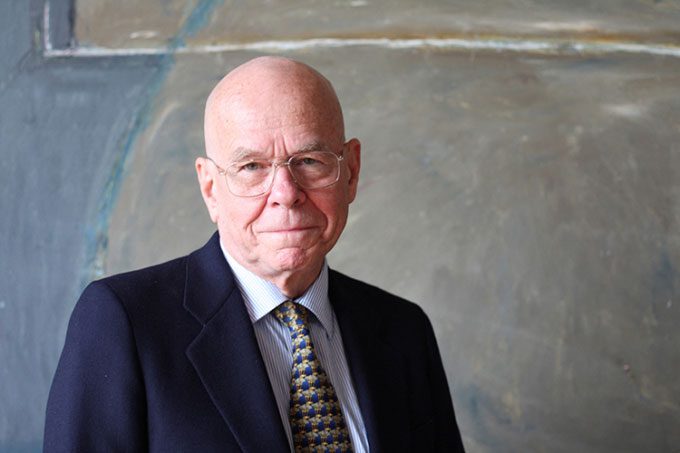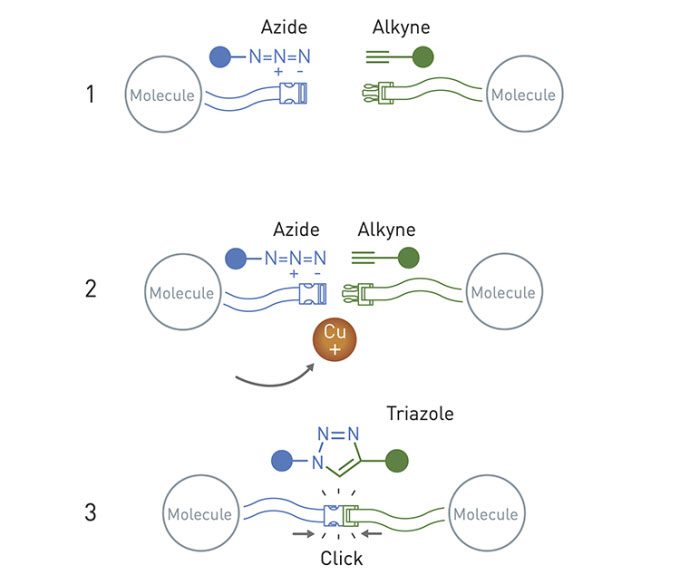With the 2022 Nobel Prize in Chemistry, Barry Sharpless (81 years old) has become the fifth individual in history to receive two Nobel Prizes.
The Royal Swedish Academy of Sciences awarded the 2022 Nobel Prize in Chemistry on October 5 to three researchers: Carolyn R. Bertozzi (56 years old, USA), Morten Meldal (68 years old, Denmark), and K. Barry Sharpless (81 years old, USA) for their pioneering contributions in the field of click chemistry and bioorthogonal chemistry, creating “a revolution in how scientists think about linking molecules together.”
Among the three scientists mentioned, Barry Sharpless is honored to receive the Nobel Prize for the second time. Previously, only four individuals had achieved this: Marie Curie (Nobel Prize in Physics 1903, Nobel Prize in Chemistry 1911), Linus Pauling (Nobel Prize in Chemistry 1954, Nobel Peace Prize 1962), John Bardeen (Nobel Prize in Physics 1956, 1972), and Frederick Sanger (Nobel Prize in Chemistry 1958, 1980), according to AFP.

Chemist Barry Sharpless. (Photo: Reuters)
Sharpless was born on April 28, 1941, in Philadelphia, Pennsylvania, in the eastern United States. He graduated from Friends’ Central School (a private school educating students from kindergarten through 12th grade) in 1959 and continued his studies at Dartmouth College, earning a B.A. in 1963.
Initially, Sharpless intended to attend medical school after graduating from college, but his research professor persuaded him to pursue chemistry instead. Sharpless received his Ph.D. in organic chemistry from Stanford University in 1968. He continued his postdoctoral work at Stanford until 1969, then moved to Harvard University to study enzymology in the laboratory of Konrad E. Bloch from 1969 to 1970, according to Chemical & Engineering News.
Sharpless has served as a professor at the Massachusetts Institute of Technology (1970 – 1977, 1980 – 1990) and Stanford University (1977 – 1980). Since 1990, he has held the position of Professor of Chemistry at the Scripps Research Institute and continues in that role today.
Research and Awards
Sharpless developed selective oxidation reactions and demonstrated that the formation of femtomolar effective inhibitors can be catalyzed by acetylcholinesterase enzyme, starting with an azide and an alkyne. He discovered several chemical reactions that transformed asymmetric synthesis processes, including asymmetric aminohydroxylation, dihydroxylation, and Sharpless asymmetric epoxidation, according to NNDB.
In 2001, Sharpless was awarded his first Nobel Prize in Chemistry for his research on asymmetric catalytic oxidation reactions, opening up an entirely new field of research that allows scientists to synthesize molecules and materials with new properties, greatly improving everything from antibiotics, anti-inflammatory drugs, heart disease treatments to agricultural products.
Also in 2001, at the Scripps Research Institute, Sharpless first described the term “click chemistry”, where molecular building blocks combine quickly and efficiently.
Shortly thereafter, Barry Sharpless and Morten Meldal – a professor at the University of Copenhagen in Denmark – independently published research on the key component of click chemistry, which is the copper-catalyzed azide-alkyne cycloaddition reaction. This is an efficient reaction widely used today.
“If chemists want to link two different molecules, they can do so relatively easily by putting an azide on one molecule and an alkyne on the other. Then, they ‘catch’ the molecules together with the help of some copper ions,” the Nobel Committee explained in a document.

Molecular building blocks combine quickly and efficiently through Click reactions. (Photo: Johan Jarnestad)
Meldal likened the applications of click chemistry to Lego – the iconic plastic building blocks that also originate from his home country of Denmark.
“You can create a house, bicycle, car, or any tool you want by combining these building blocks in different ways. In chemistry, we do something similar,” Meldal told AFP in an interview.
Click reactions have high applicability in many fields such as chemistry (synthesizing dendrimers – a type of branched polymer), in biology (synthesizing polymer chains onto macromolecules like enzymes or proteins to create functional hybrid materials), or in medicine (synthesizing functional polymers that change shape according to environmental conditions such as pH or temperature).
Thanks to his pioneering research in click chemistry with many important applications, Sharpless once again received the Nobel Prize in Chemistry in 2022 alongside Meldal and Bertozzi. While Sharpless and Meldal laid the foundation for click chemistry, Professor Bertozzi at Stanford University in the USA contributed to taking click chemistry “to a new level” and began applying it in living organisms.


















































